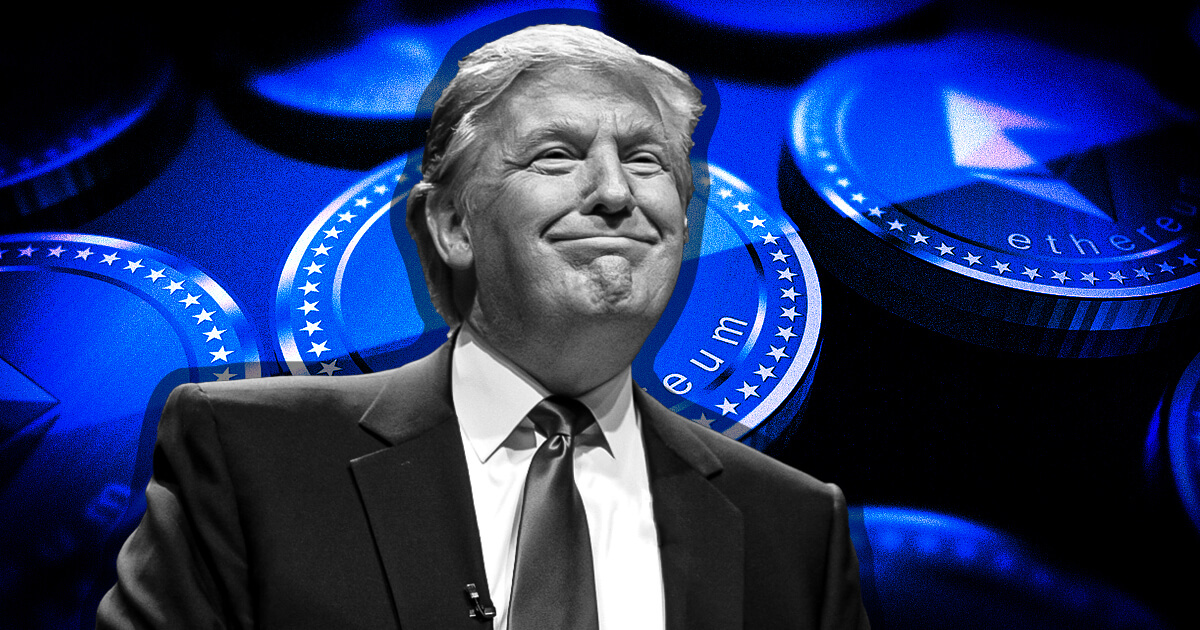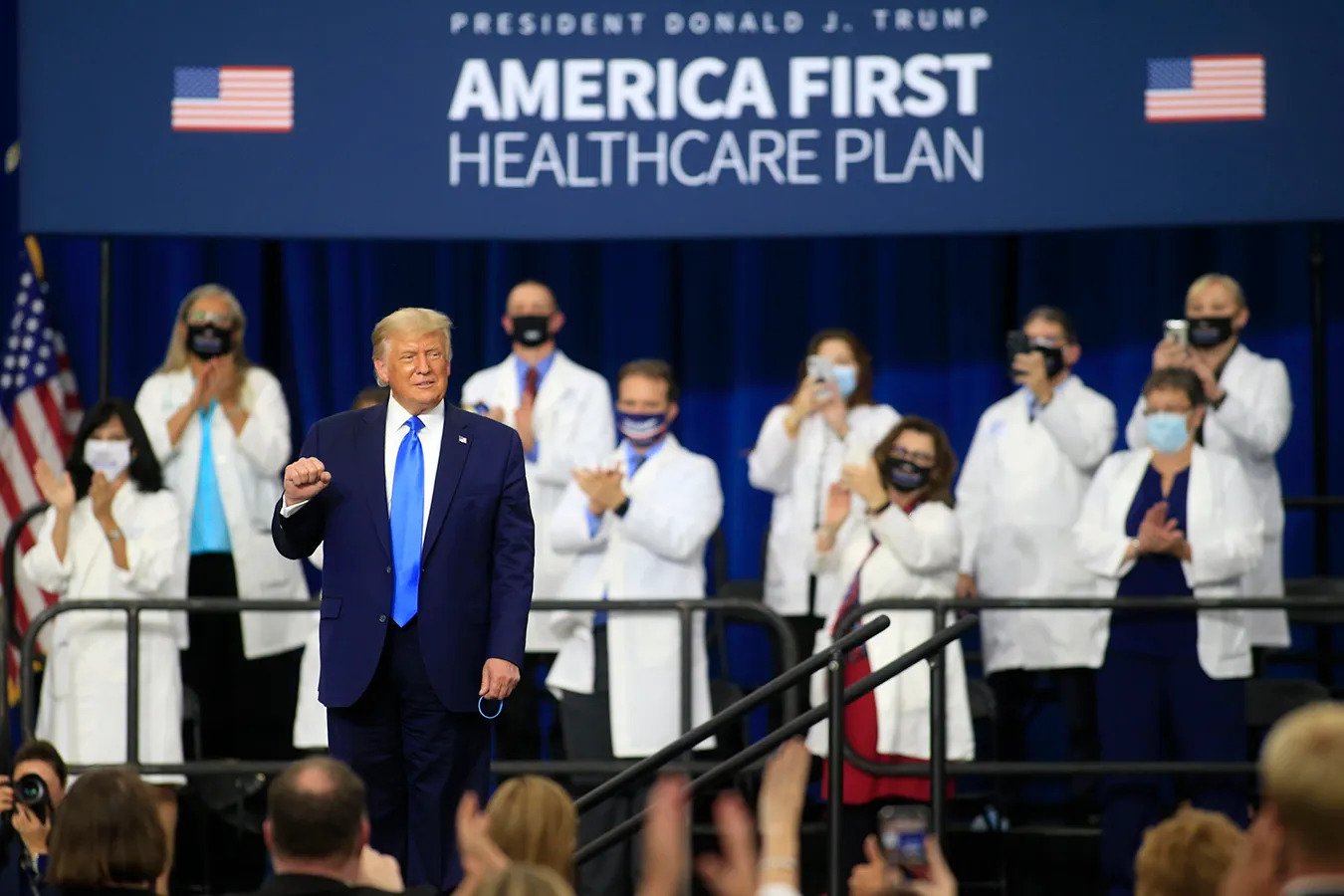What Donald Trump's Presidency Meant For Your Wallet - From Tax Breaks To Trade Wars
Learn what Donald Trump's presidency meant for your wallet? And how policies and decisions during his tenure influenced financial markets, taxes, and your personal finances. Stay informed about the financial legacy left by Trump's time in office.
Author:Rhyley CarneyReviewer:Paula M. GrahamNov 30, 20234K Shares76.5K Views

Let's delve into the key aspects of what Donald Trump's presidency meant for your wallet, examining the changes, challenges, and opportunities that unfolded during his time in office. Donald Trump's presidency, spanning from 2017 to 2021, was marked by significant policy shifts that reverberated through the economic landscape of the United States. From tax reforms to trade policies, the financial implications of Trump's tenure were far-reaching, leaving many Americans wondering about the impact on their wallets.
Many people are surprised by Trump's popularity, but so are his policies, which represent a significant change from those of career politicians. For months, debate has raged over whether Trump's fiscal ideas would benefit the American people and economy or make us worse off.
How Did Trump's Tax Policies Affect Personal Finances?
Donald Trump's tax policies, prominently encapsulated in the Tax Cuts and Jobs Act of 2017, significantly influenced personal finances during his presidency. The hallmark of these reforms was a substantial reduction in both corporate and individual tax rates, with the aim of fostering economic growth, job creation, and putting more money into the pockets of everyday Americans.
For individual taxpayers, the impact was multifaceted. Lower tax rates across several income brackets meant many experienced a boost in their take-home pay. Standard deductions were increased, providing additional relief for filers. However, the changes were not uniform, and high-income earners tended to benefit more substantially. The simplification of the tax code also aimed to make the filing process more straightforward, potentially easing the administrative burden for many.
Additionally, the Act brought alterations to deductions, including capping state and local tax deductions. While some taxpayers in states with high income and property taxes may have seen a slight increase in their federal tax liability, others benefited from an expanded child tax credit and the preservation of certain deductions.
Small business owners and corporations witnessed a favorable shift as well, with a significant reduction in the corporate tax rate from 35% to 21%. This move aimed to enhance competitiveness, attract investments, and stimulate job creation.
Critics argued that the benefits disproportionately favored the wealthy, contributing to income inequality. The long-term effects of these tax policies remain a subject of debate, but there's no denying that they reshaped the financial landscape for individuals and businesses alike, making it imperative for taxpayers to understand the nuanced impact on their personal finances.
Individual Income Tax Reforms
Trump's straightforward but bold tax reform proposal may be what most clearly distinguishes him from the rest of the presidential field. The current progressive seven-tier tax brackets would be replaced by four simple brackets under Trump:
On the one hand, Trump's tax plan's selling point is that it would put more money in the wallets of lower - and middle-class families and consumers. Married couples earning up to $50,000 a year would be exempt from federal taxation. Having more money may provide an additional motivation to save and invest for the future, or it may mean strengthening the US economy through consumption.
Trump's tax plan, on the other hand, would almost certainly lower the federal government's tax income by trillions of dollars. Trump, for his part, has committed to slashing expenditure in specific departments of government, but spending cuts are unlikely to come close to the Tax Foundation's estimate of a $12 trillion static drop in tax income over the decade after the implementation of Trump's tax policy.
Simply put, Trump's individual income tax policy has the potential to significantly increase the federal budget deficit and our nation's massive $19 trillion-plus debt load.
Corporate Tax Reductions And Domestic Job Creation Efforts
In addition to lowering individual income taxes, Trump proposes big business reforms to boost economic growth and bring jobs back to America. Trump's strategies include lowering the corporate income tax rate from 35% to 15%, establishing a 10% tax break for American corporations that opt to repatriate offshore earnings, and possibly imposing tariffs on imported goods. During a March debate, Trump stated that he would support imposing a 45% tariff on Chinese goods "if they don't behave."
Reduced corporate income taxes would put more money back into their coffers, presumably encouraging acquisitions, expansion, and employment development. In order to retain expertise, more domestic jobs may drive American businesses to raise compensation for skilled and tenured workers.
Reduced corporate income taxes, on the other hand, remove a significant chunk of federal revenue from the equation, potentially expanding the federal debt. Worryingly, what would happen if Trump decided to play hardball with foreign industries and impose tariffs? Countries such as China and Mexico may respond with tariffs of their own, resulting in net job losses, lower salaries, and weaker economic growth prospects in the United States.
Healthcare Reform
"The Donald" announced his long-awaited seven-point healthcare reform plan in March, with the goal of repealing and replacing Obamacare. Trump has been a vocal opponent of Obamacare since its inception, and his plan would make a lot of significant changes.
This would include allowing the sale of health insurance policies across state lines, allowing consumers full health-premium tax deductions, encouraging the use of Health Savings Accounts, removing barriers to the entry of foreign-made pharmaceuticals into the United States, and advocating for Medicaid block grants to all states. You can read a far more detailed summary of Trump's health-care plan here.
Trump's suggestions for health-care reform are intriguing. Shopping for drugs abroad could save Americans and physicians a lot of money. Allowing the sale of health insurance policies across state lines may also increase competition among insurers for new members, slowing or stopping premium price increases.
However, Trump's healthcare plan may have weaknesses. For example, Obamacare expressly states that no insurer may refuse coverage for individuals with pre-existing diseases. Because Trump's healthcare reform does not address this issue, millions of people with pre-existing ailments may be in for an unpleasant surprise.
Perhaps the most serious concern is that Trump's plan would allow people to deduct their insurance costs from their taxable income. Well-off Americans who can afford a comprehensive plan for themselves and their families would be able to deduct every penny, whereas lower-income folks who purchase the cheapest plan available and are likely to require the most financial assistance would only receive a tiny tax deduction.
Trump's Trade Policy
Donald Trump's trade policy was a central and often controversial aspect of his presidency, with a primary focus on reshaping international trade relations to prioritize American interests. His administration sought to address perceived imbalances, protect domestic industries, and negotiate what he termed as "fairer" trade deals. The trade policy under Trump was characterized by several key features that had far-reaching implications.
One of the most prominent moves was the imposition of tariffs on various imported goods, notably from China. These tariffs aimed to protect American industries from what the administration considered unfair trade practices, including intellectual property theft and technology transfer. While intended to bolster domestic production, these tariffs also had consequences for consumers, leading to increased prices for a range of products.
Renegotiating existing trade agreements was another pivotal aspect of Trump's approach. The United States-Mexico-Canada Agreement (USMCA) replaced the North American Free Trade Agreement (NAFTA) during his tenure. The new agreement aimed to modernize trade relations between the three countries, with provisions addressing issues such as automobile manufacturing, labor standards, and intellectual property.
The emphasis on bilateral negotiations over multilateral agreements was a departure from previous administrations. Trump argued that this approach allowed for more targeted and advantageous deals, tailored to specific American interests. However, critics raised concerns about the potential isolationist impact and strained relationships with longstanding allies.
The trade policy under Trump generated mixed reactions, with supporters applauding efforts to protect American industries and create a level playing field, while detractors warned of potential economic repercussions and strained diplomatic relations. Understanding the nuances of Trump's trade policy is essential for grasping its impact on businesses, consumers, and the broader global economic landscape.
Social Security
Finally, because the vast majority of Americans are covered by or contribute to the Social Security system, what happens to Social Security is becoming increasingly important. This is especially true given the Trust's Board of Trustees' prediction that the Trust's excess cash reserves will be depleted by 2034, necessitating a 21% reduction in payouts.
Trump's words on Social Security imply that he wants to maintain the program for seniors who have paid into it, but he also recognizes that changing Social Security during an election year is political suicide. According to The Washington Times, Trump said the following in 2013 at a Conservative Political Action Conference: If Republicans believe they can reform Medicare, Medicaid, and Social Security for the worse while also winning elections, they are mistaken.
The inference here is that Trump may want to postpone any changes to Social Security. While this would alleviate any immediate concerns for existing beneficiaries, it does not inspire confidence in pre-retirees and current workers who may rely on Social Security in retirement.
To be fair, there is no certainty that Trump's ideas will be approved by Congress in their current shape – or that he will even be elected president in November. However, if he is elected president and is able to put any or all of his stated plans into effect, your wallet will surely suffer. The only question is whether it will become larger or decrease.
Understanding Trump's Economic Stimulus
Understanding Trump's economic stimulus measures is crucial for unraveling the financial dynamics during his presidency, particularly in the face of unprecedented challenges like the global COVID-19 pandemic. The administration implemented various stimulus packages aimed at mitigating the economic fallout and providing relief to individuals, businesses, and the broader economy.
In response to the pandemic, the CARES Act, signed into law in March 2020, was a pivotal component of Trump's economic stimulus strategy. The Act allocated direct payments to individuals, expanded unemployment benefits, and provided financial support to businesses grappling with the impact of lockdowns and disruptions.
Individuals received stimulus checks, commonly referred to as economic impact payments, providing financial relief to millions facing economic hardship. The size of these payments varied based on income levels and family size, with the goal of injecting liquidity into households.
Expanded unemployment benefits played a crucial role in assisting those who lost their jobs or experienced reduced hours due to the pandemic. The CARES Act added a weekly federal supplement to state unemployment benefits, offering additional support during a period of heightened economic uncertainty.
Furthermore, the Paycheck Protection Program (PPP) was a key initiative aimed at aiding small businesses. It provided forgivable loans to businesses that maintained payroll, helping them navigate the economic challenges and retain employees.
While these stimulus measures were instrumental in providing immediate relief, they also fueled debates about their effectiveness, long-term economic consequences, and the distribution of benefits. Understanding the intricacies of Trump's economic stimulus is essential for comprehending the role of government intervention during times of crisis and its impact on the financial well-being of individuals and businesses
What Donald Trump's Presidency Meant For Your Wallet - FAQs
What Were The Effects Of Trump's Trade Policies On The Average Consumer's Finances?
Trump's trade policies, like tariffs on certain imports, had implications for prices of goods, affecting consumer spending and budgets.
How Did Trump's Economic Stimulus Packages Affect The Wallets Of Everyday Americans?
Economic stimulus measures, including tax relief and pandemic-related aid, had direct implications for individuals, providing financial support during challenging times.
Were There Any Long-term Economic Trends Initiated During Trump's Presidency That Continue To Shape Personal Finances Today?
Some policies and economic shifts during Trump's tenure may have laid the groundwork for ongoing trends, impacting individuals in the present.
Did The National Debt Increase Under Donald Trump, And What Does It Mean For Future Generations' Financial Stability?
The national debt did rise during Trump's presidency. Understanding the implications of this on future economic conditions is crucial for considering financial stability.
Did Trump's Deregulation Initiatives Have Any Noticeable Effects On Personal Finances?
Deregulation efforts aimed at reducing business restrictions could have influenced various industries, potentially affecting prices and competition.
Conclusion
As we conclude our examination of what Donald Trump's presidency meant for your wallet, it becomes evident that the financial legacy left behind is complex and multifaceted. The impact on individual finances varied and was shaped by tax reforms, trade decisions, and broader economic trends. Whether one experienced a boost in certain sectors or navigated challenges in others, the financial landscape transformed during this period. Understanding these shifts provides valuable insights into the interconnected relationship between politics and personal finances, serving as a foundation for informed perspectives on the economic journey ahead.
Jump to
How Did Trump's Tax Policies Affect Personal Finances?
Individual Income Tax Reforms
Corporate Tax Reductions And Domestic Job Creation Efforts
Healthcare Reform
Trump's Trade Policy
Social Security
Understanding Trump's Economic Stimulus
What Donald Trump's Presidency Meant For Your Wallet - FAQs
Conclusion

Rhyley Carney
Author

Paula M. Graham
Reviewer
Latest Articles
Popular Articles

